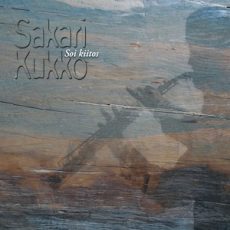
Daily Dose Of Jazz…
Jyrki Sakari Kukko was born July 8, 1953 in Kajaani, Finlan and started his career in the early 1960s as a singer participating in several singing contests and performing in radio stations, TV programs and other venues. At the age of 7, he began taking piano lessons and soon after started playing guitar and flute, then saxophone. The mid-1960s saw him forming bands, constructing a school band, playing mainly rock and roll, before forming a group of local dance bands.
He embarked his career at sixteen playing with the Kajaani Big Band, Kisu & Uniset, Markku Suominen’s Monopol, Tapiola Big Band, Oulunkylä Big Band, Maarit & Afrikan Tähti, Kalevala, SIMO Big Band, Jukka Tolonen’s band, Heikki Sarmanto’s band, Sensation Band of Addis Ababa, Mahmoud Ahmed’s Ibex Band, Etoile de Dakar, and Espoo Big Band through the Seventies. He founded the group Piirpauke in 1974.
He has performed with Youssou Ndour, John McLaughlin, Pat Metheny, Bob Mose, Lester Bowie, Charlie Mariano, Thad Jones, Paquito d’Rivera, Ted Curson, Walter Bishop Jr., Herbie Hanckock’s HeadHunters, Richie Cole, Juan Carlos Romero, and numerous Finnish musicians.
Working as a studio-musician Kukko performed as a freelancer with the Helsinki Philharmonic Orchestra, Finnish Radio Symphony Orchestra, and the Finnish National Opera. He has composed music for his own bands, EBB, Koiton Laulu and several films and theaters.
Pianist, flutist, guitarist, saxophonist, vocalist and composer Sakari Kukko continues to perform with over forty countries around the globe.
More Posts: bandleader,composer,flute,guitar,history,instrumental,jazz,music,piano,saxophone,vocal
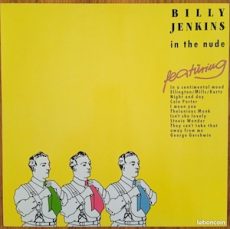
Daily Dose Of Jazz…
Charles William Jenkins was born July 5, 1956 in Bromley, Kent, England and was known to the jazz and blues worlds as Billy. He began learning the violin from the age of nine and two years later added piano and choir. By twelve he taught himself to play the guitar.
As a young teenager, Billy started regular jam sessions in the basement of the bohemian twenty-three room former hotel where he grew up. This jam session attracted many local contemporaries, his best friend at the time, Bill Broad, who the world came to know as Billy Idol and Steven Bailey, later to become Steven Severin.
During those teen years he performed in local church halls, USAF Bases in East Anglia, riverside pubs, local colleges and clubs under various names 1970-72. Jenkins toured and recorded for Arista Record’s Clive Davis with art rock band Burlesque from 1972-77, performed as a young adult with ‘alternative musical comedy’ duo The Fantastic Trimmer & Jenkins from 1979-82 and drummer Ginger Baker before founding the VOGC, the Voice of God Collective.
From 1983 – 93 he lived and worked at Wood Wharf Rehearsal Studios in Greenwich, England. Since then Billy has produced a large body of over 40 recorded albums including Scratches of Spain, Motorway At Night, Entertainment USA and Music For Two Cassette Machines. Some of his recordings are about his SE London environs and include Sounds Like Bromley, Greenwich, Still Sounds Like Bromley and Suburbia.
Guitarist, composer and bandleader Billy Jenkins, who is immersed in improvisation as ell as standards, continues to pursue his love of jazz and blues.
More Posts: bandleader,composer,guitar,history,instrumental,jazz,music
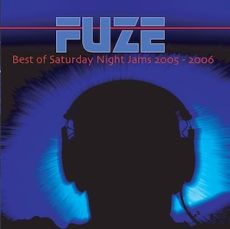
Daily Dose Of Jazz…
Joe Purrenhage was born on June 21, 1966 and grew up outside the Detroit, Michigan area where he picked up an interest in classic rock, jazz and blues. His formal training was minimal with only a couple of years of piano lessons at a young age and percussion in the high school band. However, he started to teach himself the bass, guitar, keyboards and synthesizer programming.
Enlisting in the Air Force he met many musicians with different infuences and styles. After the Air Force, Joe focused on starting an all original band with some friends and had some limited success with a pop/rock band called Earthbound. In the early 1990s Joe met drummer Marcus McGlown and a musical friendship was started that continues today.
Marcus and Joe started something that had a little more of the ’70s fusion flavor to it. Calling guitarist Craig Wisper they sowed the seeds to the modern fusion group Fuze. Their improvisational approach to music was heard at the Saturday Night Jam where all boundries were dropped for a unique blend of rock and jazz.
By 2000, Doug Nolls joined the band and after building a studio released their debut project across social media garnering 100,00 plus plays over three years.
Joe Purrenhage and Fuze continue to create new music and self-produces their works to keep the fusion spirit alive.
More Posts: bandleader,guitar,history,instrumental,jazz,keyboard,music
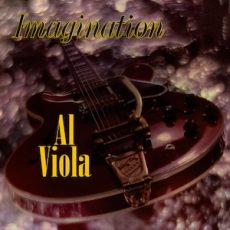
Daily Dose Of Jazz…
Alfred Viola was born on June 16, 1919 in Brooklyn, New York and grew up in an Italian family. He learned to play the guitar and mandolin as a teenager. Enlisting in the Army during World War II and played in an Army jazz band from 1942 to 1945.
He started a trio with pianist Page Cavanaugh and bassist Lloyd Pratt. The band appeared in several films, including Romance on the High Seas with Doris Day, and played a few dates in 1946 and 1947 with Frank Sinatra. Viola continued to work with Sinatra regularly, accompanying him on several hundred studio recordings and concert dates between 1956 and 1980.
Viola was a session musician in Los Angeles, California performing in films and television. His mandolin playing can be heard on the soundtrack of The Godfather. Other credits include West Side Story and Who’s Afraid of Virginia Woolf? He continued playing jazz as well, with Bobby Troup, Ray Anthony, Harry James, Buddy Collette, Stan Kenton, Gerald Wilson and Terry Gibbs.
He worked as a session musician on over 500 albums, including releases by Natalie Cole, Neil Diamond, Marvin Gaye, Julie London, Steve Lawrence, Linda Ronstadt, Jimmy Witherspoon, Helen Humes, June Christy, Ella Fitzgerald, Anita O’Day, Nelson Riddle, and Joe Williams.
Viola and Cavanaugh reunited in the 1980s with Phil Mallory and continued to play regularly in Los Angeles until the late 1990s.
Guitarist Al Viola, recorded ten albums as a leader, died of cancer on February 21, 2007 at the age of 87 in Los Angeles.
More Posts: bandleader,guitar,history,instrumental,music
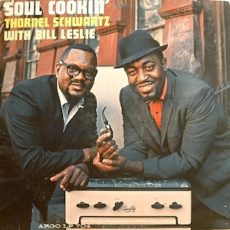
Daily Dose Of Jazz…
Thornel Schwartz Jr. was born on May 29, 1927 in Philadelphia, Pennsylvania. He attended the Landis Institute for piano, but became known as a jazz guitarist starting in the 1950s. He was Freddie Cole’s guitarist early in the decade, then worked with Jimmy Smith and Johnny Hammond Smith later in the decade.
The 1960s saw Schwartz recording with Larry Young, Jimmy Forrest, Charles Earland, Byrdie Green, Sylvia Syms and extensively with Jimmy McGriff. In the 1970s he recorded with Groove Holmes.
Though he is known as Thornel on recordings and standard jazz reference works, having recorded one album as a leader and twenty-six as a sideman, his name is spelled Thornal on his social security application, as is his father.
Electric guitarist Thornel Schwartz Jr., who played on the recordings of many Philadelphia jazz musicians, especially electronic organ players, died on December 30, 1977 in his hometown.
More Posts: guitar,history,instrumental,jazz,music




